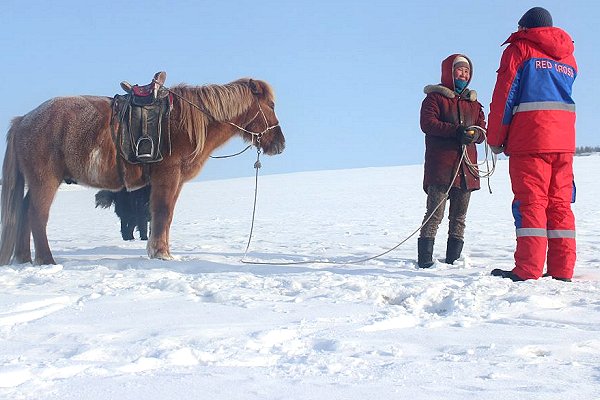
IFRC releases cash for Mongolian herders facing new in first-ever use of early-action funding mechanism

(This story is an IFRC press release issued earlier today in Ulaanbaatar, Geneva and Kuala Lumpur.)
Forecasts of an extreme winter in Mongolia have triggered the release of funding to reduce its impact on vulnerable herders – the first time this early-action funding mechanism developed by the IFRC has been used anywhere in the world.
On 2 January, Mongolia’s National Agency for Meteorology and Environmental Monitoring announced more than 50 per cent of the country was at risk of an extreme dzud winter.
This triggered the release of CHF 210,968 (217,000 US dollars) to the Mongolian Red Cross Society (MRCS) for forecast-based action from the IFRC’s Disaster Relief Emergency Fund.
The funding provides the equivalent of just over 90 US dollars in cash each for 1,000 vulnerable herder families to prevent the starvation, dehydration and exposure to cold of their livestock because of poor access to feed, water, veterinary care and shelter.
A livestock nutrition-kit will support livestock health during winter’s lean months.
‘Simply waiting for disasters to strike
is no longer an option’
MRCS Secretary General: Bolormaa Nordov said: “Dzud is catastrophic for the agricultural sector which is vital to the Mongolian culture and economy.
“We have 70 million livestock, which directly support about a quarter of our people. Horses, camels, goats, cattle and sheep for milk, cashmere, meat and other livestock products are the only source of income for herders.
“Every extreme winter brings misery, hunger and hardship for thousands of families and forces them to move to squatter settlements outside Ulaanbaatar, our capital. This finance allows the Red Cross to help some of the most at-risk people before winter sets in for good.”
Using meteorological models and historical data, experts can forecast the probability of extreme weather events with increasing accuracy.
‘Finance model’
Combining weather forecasts with risk analysis allows IFRC funding to be released so people can prepare for extreme weather.
The goal of forecast-based financing is to anticipate disasters, prevent their impact, if possible, and reduce human suffering and losses. The key element is to agree in advance to release financial resources if a specific forecast threshold is triggered.
IFRC Head of Beijing Country Cluster Support Team Gwendolyn Pang said: “Forecast-based financing helps communities move from reacting to disasters to anticipating them.
“Climate change, which brings disasters that are increasing in frequency, length and intensity, makes this kind of finance model even more crucial. Simply waiting for disasters to strike is no longer an option.”
Mongolian Red Cross personnel conduct a field assessment for dzud risk last year. New emergency funding announced by the Red Cross today will help 1,000 herder families get through another harsh winter in Mongolia. (Library photo: IFRC-MRCS)